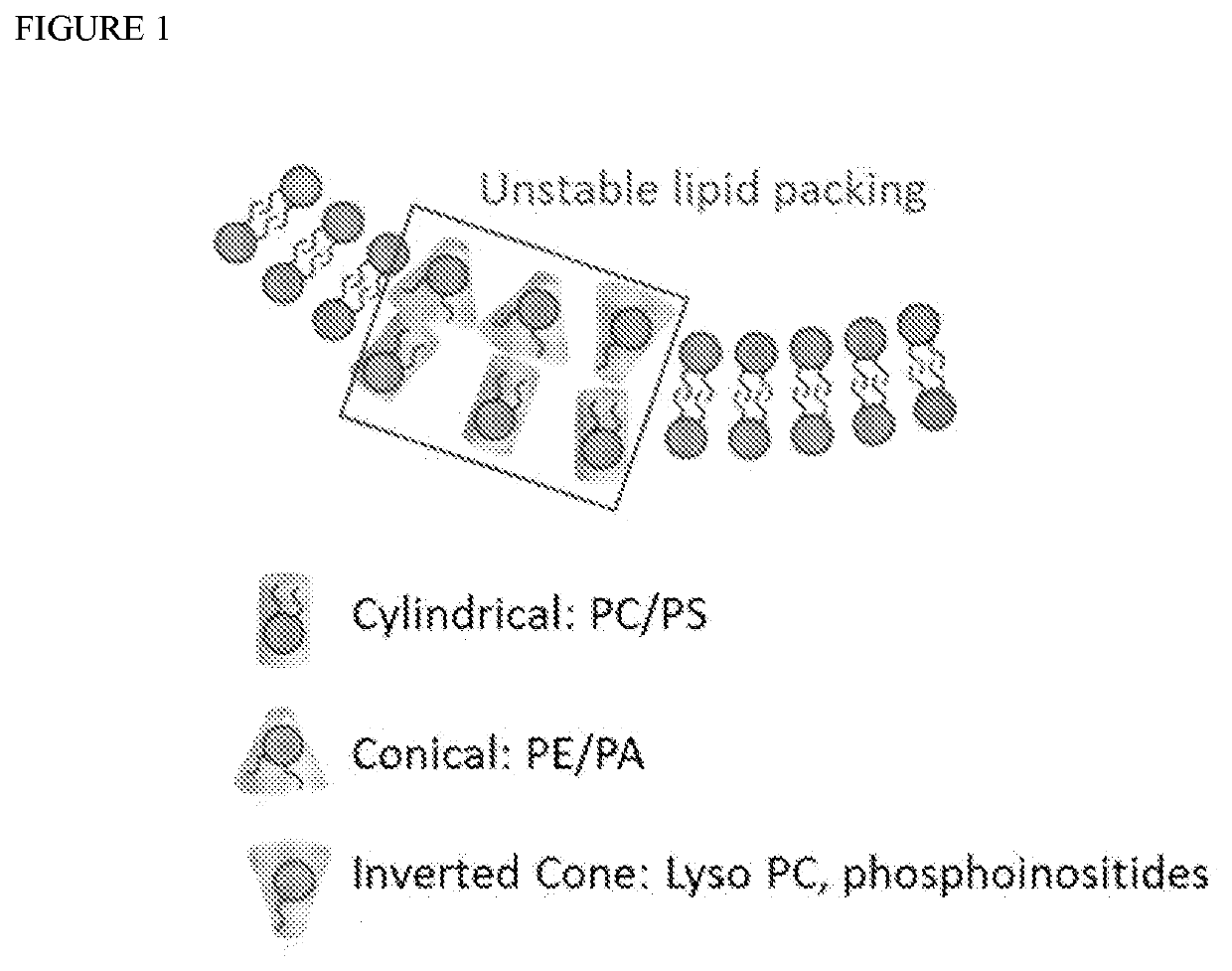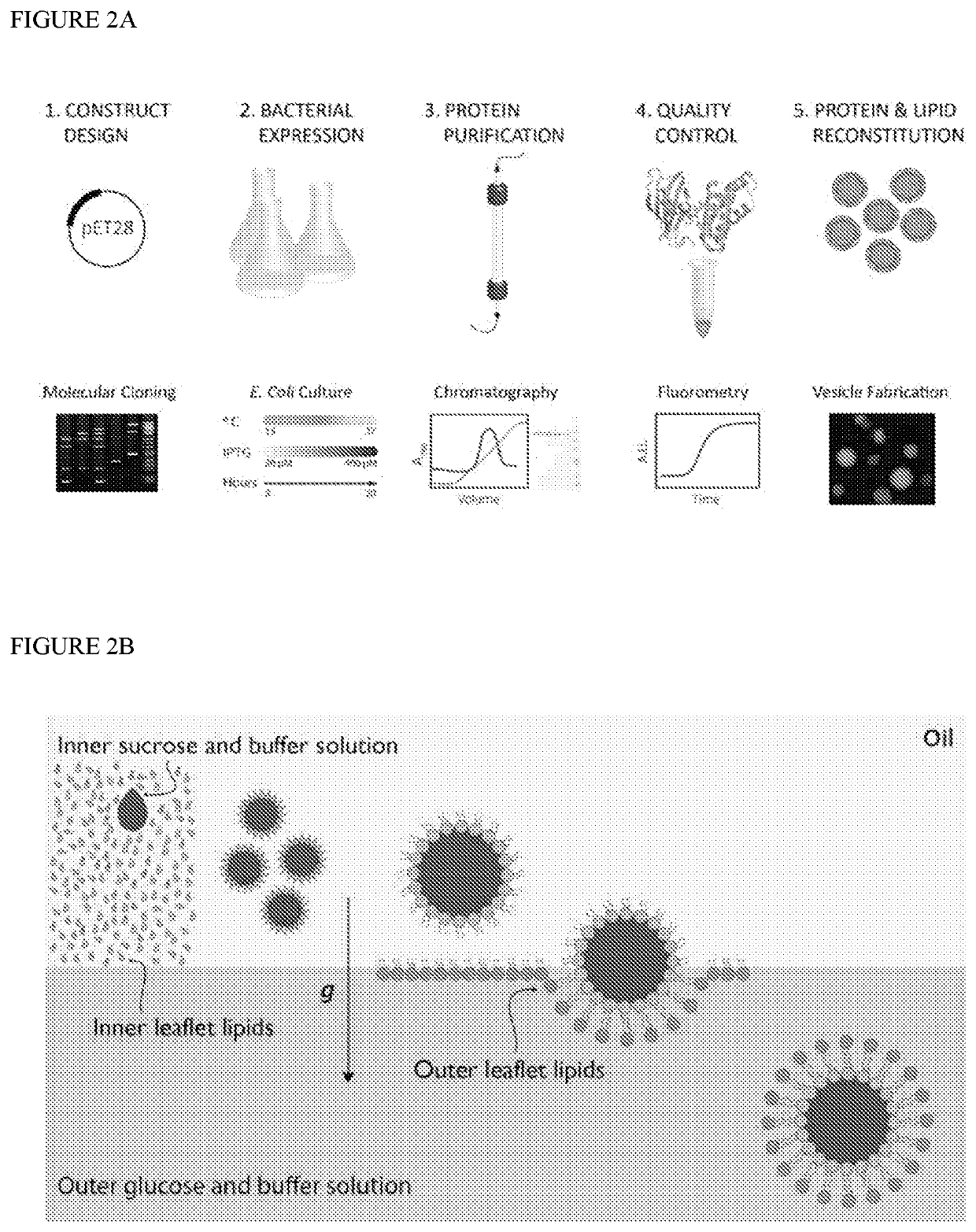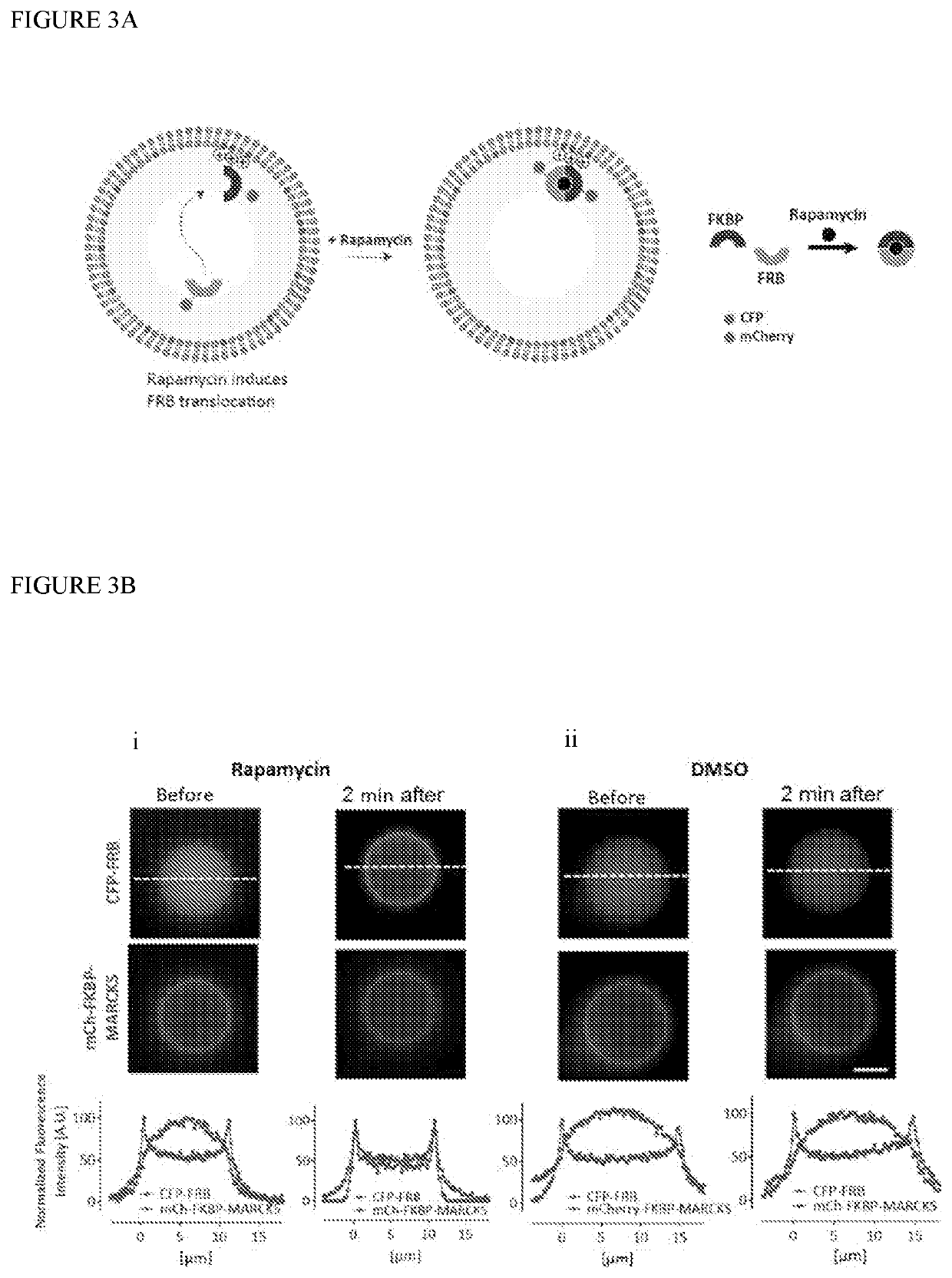Methods for making giant vesicles and their use
a giant vesicle and vesicle technology, applied in the direction of liposomal delivery, etc., can solve the problems of vesicles with the goal of membrane permeability with respect to various chemical targets, and the challenge of encapsulating biological materials inside such vesicles in a physiologically relevant environment,
- Summary
- Abstract
- Description
- Claims
- Application Information
AI Technical Summary
Benefits of technology
Problems solved by technology
Method used
Image
Examples
example 1
[0109]Various dextran dyes and soluble fluorescent proteins were encapsulated to optimize robust fabrication of vesicles with luminal content. The fabrication process was then adapted to allow for encapsulation of membrane-bound protein components as well. This was accomplished by fusing the MARCKS domain to the protein of choice and in turn using the PS or PIP2 lipids in the inner leaflet. Moreover, an exemplary system was assembled where the localization of the protein content could be shifted from the lumen to the membrane on demand by adding rapamycin that permeates the vesicles (FIG. 3). This was achieved by using the chemically inducible dimerization paradigm where FKBP (FK506 binding protein) and FRB (FKBP-rapamycin binding) protein can hetrodimerize in the presence of rapamycin. At the initial time point, mCh-FKBP-MARCKS is anchored at the membrane and the CFP-FRB is luminal. However, upon rapamycin administration, the CFP-FRB translocated towards the membrane where its FKBP...
example 2
[0110]GUV coupled with the chemically inducible dimerization system were used to change the localization of the encapsulated peptides at will. This method and resulting composition was used to assemble a mimetic Rac1 signaling pathway in the artificial cells.
[0111]Ras-related C3 botulinum toxin substrate (Rac) is a member of the RAS family of small GTPases. Rac proteins are highly plastic in terms of subcellular localization, regulation, and crosstalk with other signaling pathways, and thus, serve as a regulation point of many cellular processes. For instance, active Rac1 triggers activation of a large variety of downstream effectors, leading to signaling events controlling protein trafficking, antimicrobial cytotoxicity, glucose transport, cytoskeleton rearrangement, and directed motility. Particularly, Rac1 is known as the master regulator of cell motility and is key in tumor angiogenesis, invasion, and metastasis. Thus, Rac1 inhibitors are of interest given their potential as the...
example 3
[0113]Use of Giant Vesicles to Elucidate the Function of FzlC with FtsZ in Bacterial Cytokinesis and Cell Division in Prokaryotic Organisms.
[0114]In most bacteria, the tubulin-like GTPase FtsZ forms an annulus at midcell (the Z-ring) which recruits the division machinery and regulates cell wall remodeling. One poorly understood class of FtsZ regulators mediates its membrane association. Most of what is known about FtsZ's membrane association comes from work in Escherichia coli. In that organism, inactivation of both of the known membrane anchors, FtsA and ZipA, destabilizes preformed Z-rings and blocks de novo Z-ring assembly. In vivo and in vitro characterization of the FtsZ-binding protein FzlC suggests that it is one such candidate membrane tether.
[0115]Since FzlC binds both to FtsZ filaments and membranes in vitro, it was hypothesized that FzlC could function as a membrane anchor for FtsZ. The precedence of encapsulating bacterial proteins, including FtsZ membrane tethers, insid...
PUM
 Login to View More
Login to View More Abstract
Description
Claims
Application Information
 Login to View More
Login to View More - R&D
- Intellectual Property
- Life Sciences
- Materials
- Tech Scout
- Unparalleled Data Quality
- Higher Quality Content
- 60% Fewer Hallucinations
Browse by: Latest US Patents, China's latest patents, Technical Efficacy Thesaurus, Application Domain, Technology Topic, Popular Technical Reports.
© 2025 PatSnap. All rights reserved.Legal|Privacy policy|Modern Slavery Act Transparency Statement|Sitemap|About US| Contact US: help@patsnap.com



